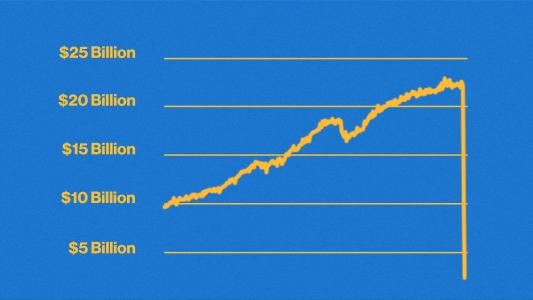Last September, Gabriela Hearst’s runway show was the first to go carbon neutral. But for an industry that is fraught with environmental problems, is a carbon-neutral event enough? Hearst thinks not. Hers is the first brand to partner with Eon Group to introduce the CircularID, a new standard for promoting the circular economy in fashion.
The fashion industry has a reputation for being — to put it politely — not-so-green. It ranks among the top ten most polluting industries in the world. The industry produced 1.7 billion tons of CO2 emissions and created 92 million tons of waste in 2015. And it isn’t friendly to circular economy principles.
The circular economy strives to be waste-free, by actively engaging in reuse, repair, recycling, remanufacturing, and resale. But for the fashion industry, a waste-free standard is hard to live up to. Currently, the business model supports a one-way supply chain: manufacture, distribute, and sell. At that point, the manufacturer loses sight of the item.
But Hearst and CircularID hope to change that.
“There’s an incredible responsibility that companies need to take for how their products are being produced, what the impact of their work is, and what the kind of culture their company is,” says Natasha Franck, who launched the CircularID earlier this year.
“We see the (CircularID) as a vehicle to support a more transparent and ethical community-building practice. And we’re hopeful for positive change across the fashion and retail industry, which I think really needs it right now.”
The CircularID uses either a clothing RFID tag or QR code that holds information about the garment. But Franck says it is more significant than that: the label is an avenue for a full-fledged conversation between the brand and the consumer, bringing transparency to the product’s entire life.
Through the digitized ID, brands can engage with the customer from the moment it is produced, through its secondhand resale, and finally when it is passed on to a recycler. This digital trail enables brands to work toward circular business models.
Some of the information consumers can access include styling tips, design inspiration, the garment’s carbon footprint, where to bring the product for recycling, or how to exchange it for a new item. Resellers and recyclers can find out information like the product’s second-hand value, or material content.
Franck says the content in the tag isn’t “one-size-fits-all.” It is designed to allow the brand to address the customer’s values. If a brand is focused on sustainability, the customer can find information on the brand’s ethics. If a brand focused on style, like a Kardashian brand, the customer might be interested in influencer content.
Eon Group isn’t the only supply chain tracking platform. TrusTrace uses Blockchain for end-to-end product traceability in the circular economy. And Franck’s effort aligns with the fashion industry’s push towards sustainability through refurbishment or resale. Rent the Runway allows subscribers to rent designer clothing for a lower cost. Walmart just launched a resale line. And Patagonia’s Worn Wear and NorthFace’s Renewal Workshop sell reclaimed and refurbished items.
If every product had an identity, it would be so much easier to resell, so much easier to recycle.
Natasha Franck
For Gabriela Hearst, the CircularID promotes authenticity, an essential aspect for luxury brands.
“Our type of client is not the type that buys and resells,” she told Vogue Business. “She probably will have a piece and give it to a friend or her children. We work to be so desirable that they are a hand-me-down, so the most powerful tool for us is to understand how this fiber got made and how long it had to travel.”
Franck came up with the idea for CircularID when she was working on large scale urban planning projects throughout China and India. She felt that the hardest issues to address were waste and air pollution. She determined that the best way to address waste (from a systems-level perspective) was through item-level identification of products to be managed and recaptured.
Franck already she has major partner brands including H&M, Target, Tommy Hilfiger, and Calvin Klein. She expects 10 million products with a CircularID to be launched by the end of the year.
The most crucial aspect of CircularID is that it promotes the circular economy by allowing brands to stay involved with the product by finding multiple engagement opportunities. It creates an ongoing dialogue between the brand and the customer.
“The companies, the resellers of these products, they want to be able to ID the products. They call this nirvana,” she says. “If every product had an identity, it would be so much easier to resell, so much easier to recycle.
